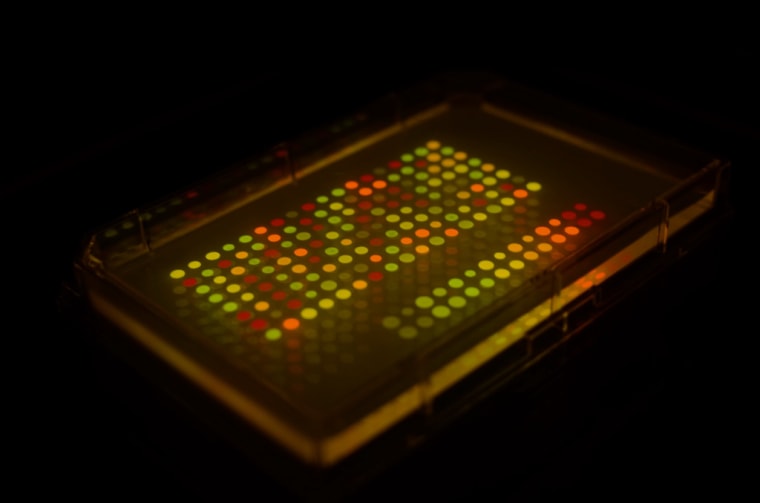
Scientists are tweaking bacteria to send encrypted messages that can be shipped via snail mail on sheets of paper-like material called nitrocellulose.
The recipient grows the bacteria with a select cocktail of nutrients and other chemicals. Once grown, each microbe glows one of seven colors when exposed to the right kind of light. Different colored microbes are arranged to represent different letters and symbols. If you know the nutrient and chemical cocktail as well as the keys to the code, you can decipher the message.
For an added layer of security, many glowing microbes can be sent along, but only those that survive a dose of a particular antibiotic will reveal the intended message when exposed to the right light.
"There are several layers of encoding in the message," Manuel Palacios, a chemist at Tufts University in Medford, Mass., and lead author of a paper on the technique, told me today.
To prove the point, the team created a message that when exposed to ampicillin read "this is a bioencoded message from the walt lab at tufts university 2011." The drug kanamycin gave different glowing bacteria that encoded the message: "you have used the wrong cipher and the message is gibberish."
Palacios and his colleagues named this biological messaging steganography by printed arrays of microbes, or SPAM. They describe it in this week's issue of the Proceedings of the National Academy of Sciences.
The technology is rooted in funding from DARPA, the military's high-tech research agency, which suggests real-world spies could be communicating with messages encoded in arrays of glowing bugs.
"I love that this triggers all this discussion about spies and stuff," Palacios noted, but said practical applications are more likely to be found in the biotech world.
For example, a biotech company that develops a high-yielding variety of genetically modified corn could use this technique to give the plant an easily-identifiable characteristic that thwarts attempts to steal it.
Currently, biotech companies stamp the genetic code of their modified crops, but genetic sequencing in the lab is required to read the stamp.
"With this method, we are demonstrating that we can encode genetic information and we can decode it into something that just by looking at it you will be able to know what the message is," Palacios explained.
In this case, the message isn't top secret. Rather it is not obvious. So, for example, a corn stalk could be engineered to carry a biobarcode that can identify the plant as proprietary.
"That's where we might be seeing an application in the future," Palacios said.
More on secret messages:
- Strange twists in a DNA message
- Plants that glow on their own developed
- Researchers store data in DNA bacteria
- Spy trick hides message in plain sight
John Roach is a contributing writer for msnbc.com.